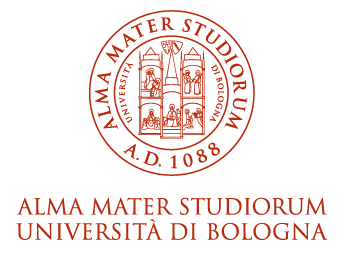- Docente: Stefano Zucchelli
- Credits: 6
- SSD: FIS/01
- Language: Italian
- Teaching Mode: Traditional lectures
- Campus: Bologna
- Corso: First cycle degree programme (L) in Mechanical Engineering (cod. 0927)
Learning outcomes
The student acquires and consolidates the basic concepts of general physics in the mathematical analysis and vector and integral calculus language. Also acquires the scientific-technical methodology required to deal with the problems of physics, with regard to classical thermodynamics and electromagnetism.
Course contents
Thermodynamics systems. Thermodinamic systems. Open, closed and isolated thermodynamic system. Thermodynamical coordinates. Thermodynamical equilibrium. State equation. Thermodynamical tranformations: quasi-static, reversible and non reversible transformations. The zero-principle of thermodynamics. Thermal expansion in solids and liquid bodies. Temperature and thermometers. Thermometers calibration. Thermodynamic transformations and changes in the state. Adiabatic work, internal energy and first principle of thermodynamics. Heat , work and conservation of energy in a general sense. Thermal capacity, molar specific heat, specific and latent heat. Temperaure scales : Celsius scale, Kelvin scale. Fahrenheit scale . The ideal gas: the Boyle isotherm law, Charles-Gay-Lussac isobar law , Gay-Lussac isochoric law, legge di Avogadro. Molar volume. Ideal gas state equation , internal energy. Isothermal compressibility module and cubic expansion coefficient. Thermodynamic transformations and state changes. Adiabatic work. Internal energy. Thermodynamic work. Energy exchanges between the thermodinamic system and the environment. The first principle of thermodynamics. Quantity of heat and energy conservation in a generalized way. Heat measurement. Heat measurement unit. Mechanical equivalent of the calorie. Thermal and refrigerating machines. Thermal capacity. The exact differential of a function of two variables. Molar heat specific and latent heat. Specific molar metal heat: Doulong and Petit law. Heat sources (thermostat). Thermodynamic work in reversible thermodynamic transformations of a perfect gas. Representation in the Clapeyron plan. Internal energy of rare real gases: Joule's Experience. The internal ideal gas energy: dependence of the internal energy from temperature. Determination of internal energy variations in reversible transformations. Specific molar calories for mono and biatomic gases. Mayer's relation.Reversible adiabatic ideal gas transformation: the Poisson equations. Irreversibility of the real thermodynamic transformations. The second principle of thermodynamics. Kelvin-Plank and Clausius's statement. Heat cycles with heat exchanges between two heat sources. Thermal cycle yield. Carnot theorem. Carnot cycle. Absolute thermodynamic temperature scale. Notes on refrigerating cycles. Clausius Theorem. Clausius inequality and entropy state function. Determination of entropy variation in various transformations: heat exchange between two heat sources, heat exchange between a body and a heat source, phase transitions. Isoentropic transformations. Change of perfect gas entropy. T-S Diagrams. Law of growth of entropy. Mathematical formulation of the second principle of thermodynamics. Entropy and "arrow of time". Entropy and unusable energy. Introduction to the kinetic theory of gases. Entropy and thermodynamic probability. Boltzmann's Law. Entropy and disorder. Entropy and information. Third principle of thermodynamics. Thermodinamic potentials. Enthalpy. Hess's law. Gibbs Potential. Helmholtz Potential. General properties of pVT systems. Maxwell's equations. Born's square. Dependence of internal energy from volume and temperature in a generic pVT system. Open pVT systems. Chemical potential. Introduction to real gas. Lennard Jones's potential. Real gas gases equations. Van der Waals equation. Virial series development. Phase transitions. Phase Diagram. Steam pressure. Relative humidity . Considerations for phase transitions of second species. Heat transfer: Heat conduction: Fourier's law. Notes on heat transmission by convention. Heat Irradiation. Stefan-Boltzmann's law.
Electricity and magnetism. Electrostatics – Coulomb’s law. Electric field and electric potential of a point charge. Linear, superficial and volumetric distributions of electric charges. Electric field generated by a straight line charged with linear uniform electric charge density. Electric field generated by a disk charged with uniform surface electric charge density . Electric field generated by an indefinite flat lamina charged with uniform surface electric charge density. Double lamina electric field. Force acting on an electric charge in the presence of electric fields. Electrostatic energy. Electric dipole. Potential and field of an electric dipole at a great distance from the dipole. Torque and electrical potential energy of a dipole in an external electric field . Gauss's theorem for the electric field and its applications. Derivation of the electric field by using the Gauss theorem: a field produced by an indefinite straight wire, an undefined flat lamina, a full sphere loaded with uniform volumetric electric charge density and a spherical shell loaded with uniform surface charge densities . Divergence and curl of the electrostatic field. Divergence theorem and Stokes’s theorems . Poisson and Laplace equations. Conductors and dielectrics. Conductors at the electrostatic equilibrium. Electrical capacity. Capacitors. Dielectric materials. Electrical current. F.e.m. Electrical resistance. Ohm’s law. Joule's law. DC current circuits. Electric networks. Kirchhoff's laws. Charge and discharge transients of a condenser. Magnetism: magnetic forces and their properties. Gauss ‘s law for the magnetic field. Biot Savart’s law. First Laplace equation, or "Biot Savart generalized equation". Applications of the first Lapace formula: determination of the magnetic field produced by a DC current circulating in a conductor coil for points on the axis of the coil. Solenoid’s magnetic field. Determination of the magnetic field produced by an indefinite flat sheet of continuous current. Magnetic field produced by a charge moving in uniform straight motion at a speed for speeds below the speed of light. Lae of conservation of the electric charge: continuity equation. Magnetic dipole moment. Lorentz's force. Force exerted by a magnetic field on a DC path circuit: Laplace's second formula. Forces between DC currents. Definition of Ampere in the International System. Forces between charges in uniform non parallel motion. Law of Ampère. Law of Faraday-Lenz. Inductance and self-inductance of a circuit. Magnetic field energy density. Magnetism in matter. Electromagnetism: displacement current. Ampère Law - Maxwell - Maxwell Equations. Maxwell's equations in vacuum. Electromagnetic waves.
Wave phenomena. Definition of perturbation and of a wave. Characteristic quantity of wave phenomena. Wave form, wave lenght, wave frequency, wave intensity and speed, wave initial phase, wave front. Plane waves. D'Alambert wave equation. Definition of phase velocity. Intensity of a wave. Definition of decibel. Longitudinal waves. Acoustic waves. Propagation speed of sound. Transverse waves. Polarization of transverse waves. Transverse wave on stretched string. Propagation speed of a wave on a stringy under tension. Reflection and refraction: reflection and transmission ( refraction ) coefficients. Impedance of a medium. Plane waves, cylindrical waves and spherical waves. Sinusoidal plane waves. Fourier theorem. Wave overlaps . Beats. Phase and group speeds. Stationary waves. Stationary waves on a string: quantization conditions of the wave frequencies. Three-dimensional Sinusoidal plane . Brief description of the phenomenon of interference, diffraction and evanescent waves. Electromagnetic waves: e.m. wave properties in vacuum. Energy aspects of the electromagnetic field: Poynting's vector and energy theorem. Radiation pressure. Brief notes on the sources of electromagnetic waves. Electromagnetic wave spectrum. Short notes on reflection and refraction of light. Vector potential.
Further information .- The course demands that the student become familiar with the indispensable elements of mathematical analysis and calculus, such as multiple integrations.
Readings/Bibliography
A. Bertin, M. Poli, A. Vitale, Fondamenti di termodinamica, Esculapio Editore (Progetto Leonardo), Bologna.
A. Bertin, N. Semprini Cesari, A. Vitale, A. Zoccoli, Lezioni di elettromagnetismo, Esculapio Editore (Progetto Leonardo), Bologna.
More recommended readings:
- Focardi, Massa, Uguzzoni
- Halliday Resnick
- Alonso Finn
- Mazzoldi, Nigro, Voci
- Rosati
- Serway & Jewett
Exercise books:
Teaching methods
The course will take place during the second semester and it represents the second part of the integrated course of Fisica Generale T.C.I. for an amount of 12 cfu ( course credits ). The first module, Fisica Generale T-A, will take place in the first semester. Each of the two courses is of 6 cfu. The course of Fisica Generale T-B is organized in frontal lessons in classroom where first of all the theoretical aspects of the treated arguments are introduced. In particular the basic notions, the main theorems and results in the fields of classic thermo-dynamics and electro-magnetism will be enunciated. Later on the wave phenomena will be introduced and in detail the electro-magnetic waves will be treated. Then some time will be dedicated to the application of the notions introduced and to the resolution of the exercises. Attendance is recommended for better learning of concepts and concepts but does not affect the final evaluation process.
Assessment methods
The examination consists of a final two hours written test and of a further oral exam. During the written examination the use of books, notes, and of a poket calculator is permitted, while the use of computers, wireless devices and mobile phones is forbidden. The written examination includes the resolution of numerical exercises. In order to accede to the oral examination, one must have reached a positive judgement in the written exam, that is to say greater or equal to 18/30. The oral examination starts from a close look of the written one and aims to verify the student's basic knowledge and the understanding of the several theoretical aspects of the discipline acquired during the course. The final mark in Fisica Generale T-B is calculated as the arithmetic average, rounded up, of the written and oral examination marks.
The final grade of the integrated course in Fisica Generale T C.I. (12 cfu) will be the arithmetic average, rounded up, of the marks obtained at Fisica Generale T-A and at Fisica Generale T-B.
The written exam calendar is made available in advance in the teacher's HomePage on the website http://ishtar.df.unibo.it/.
Students wishing to take the written exam must first register in the list available online at https://almaesami.unibo.it/almaesami/welcome.htm. On the day of the exam they must show a valid identification document.
Teaching tools
Tutor assistence.
Notices to students, and copies of the lesson slides will be posted on the teacher’s HomePage at this link: http://ishtar.df.unibo.it/
The lessons use visual integrative tools based on projector slide projections.Any tools for students with disabilities can be agreed with the Student Service with DSA.
Links to further information
Office hours
See the website of Stefano Zucchelli
SDGs

This teaching activity contributes to the achievement of the Sustainable Development Goals of the UN 2030 Agenda.
